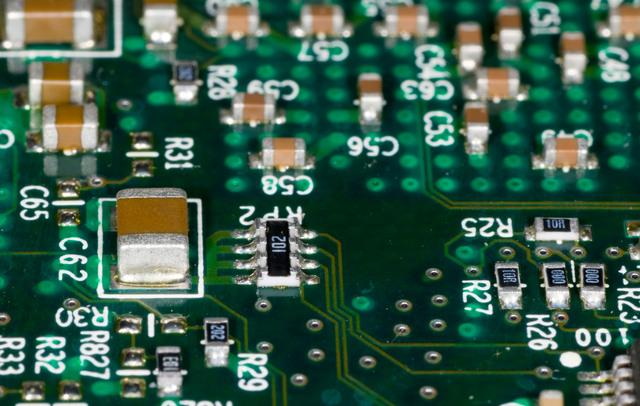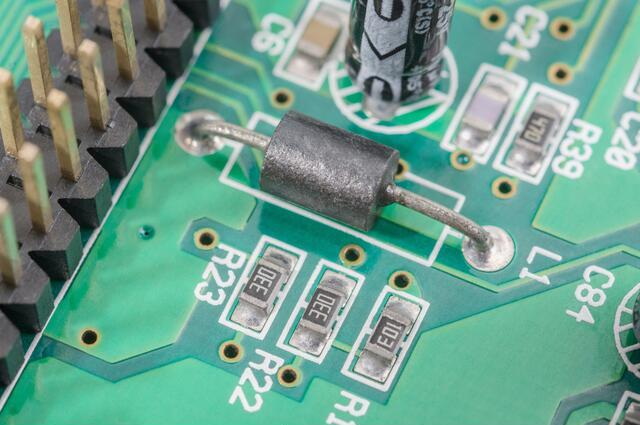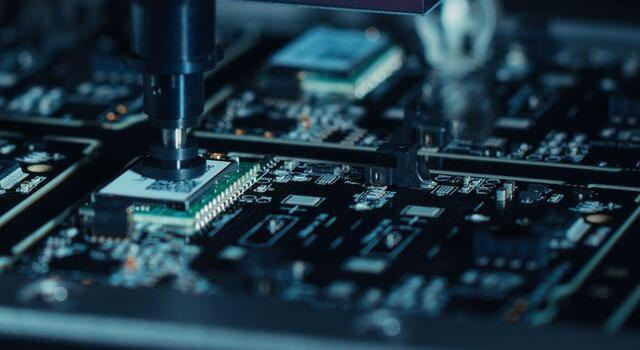Content Menu
● Understanding SMT Nozzles
>> Types of SMT Nozzles
● Factors Influencing SMT Nozzle Selection
>> 1. Component Size and Shape
>> 2. Component Weight
>> 3. Component Fragility
● Nozzle Materials and Their Impact
● Nozzle Shape Variations
● PCB Design Considerations
>> 1. Pad Layout
>> 2. Layer Count
>> 3. Component Density
● Technological Advances in SMT Nozzle Design
● Economic Considerations
● Practical Tips for Optimizing SMT Nozzle Performance
● Environmental Considerations
● Future Trends in SMT Nozzle Technology
● Conclusion
● FAQ
>> 1. What types of materials are SMT nozzles made from?
>> 2. How do I choose the right nozzle for my application?
>> 3. Can I customize SMT nozzles?
>> 4. What is the lifespan of an SMT nozzle?
>> 5. How do I maintain SMT nozzles?
Surface Mount Technology (SMT) has revolutionized the electronics manufacturing industry, enabling the efficient assembly of printed circuit boards (PCBs) with a wide variety of components. A crucial element in this process is the SMT nozzle, which plays a pivotal role in picking and placing components accurately. This article explores how SMT nozzles differ based on the types of components they handle and the specific designs of PCBs.

Understanding SMT Nozzles
SMT nozzles are specialized tools used in pick-and-place machines to handle surface-mounted devices (SMDs). They utilize vacuum suction to pick up components from feeders and place them onto PCBs. The design and functionality of these nozzles vary significantly depending on several factors, including component size, shape, weight, and the specific requirements of the PCB design.
Types of SMT Nozzles
1. Vacuum Nozzles: The most common type, these nozzles use suction to pick up components. They are versatile and can be designed for various shapes and sizes.
2. Gripper Nozzles: These are used for larger or heavier components that require a secure grip rather than suction.
3. Specialized Nozzles: Designed for delicate or uniquely shaped components, these nozzles ensure safe handling without damaging the parts.
4. Flat Nozzles: These nozzles are ideal for flat components such as chips or integrated circuits, providing a larger surface area for better suction.
5. Nozzle Adaptors: These allow for the use of different nozzle types on a single machine, providing flexibility in handling various components without needing multiple machines.
Factors Influencing SMT Nozzle Selection
The selection of an appropriate SMT nozzle is influenced by several critical factors:
1. Component Size and Shape
Different components require different nozzle designs. For instance:
- Small Components: For tiny components like 0201 or 0402 packages, high-speed nozzles with precise suction capabilities are necessary.
- Larger Components: Components such as connectors or larger capacitors may require wider or specially shaped nozzles to accommodate their dimensions.
- Irregular Shapes: Components with non-standard shapes may necessitate custom-designed nozzles to ensure proper handling and placement.
2. Component Weight
Heavier components necessitate robust nozzle designs that can securely grip or hold them during placement. Gripper nozzles are often preferred for such applications.
- Weight Distribution: The design must also consider how weight is distributed across the component to avoid tilting during placement.
3. Component Fragility
Delicate components, such as certain types of integrated circuits (ICs), require specialized nozzles that minimize contact pressure and prevent damage during handling.
- Soft Materials: For components made from softer materials, using a nozzle with a gentler grip can help prevent crushing or deformation.
Nozzle Materials and Their Impact
The material used in nozzle construction also affects performance:
- Plastic Nozzles: Suitable for lightweight and non-fragile components but have a shorter lifespan compared to metal options.
- Tungsten Steel Nozzles: Durable and capable of handling a variety of components but may show wear over time.
- Ceramic Nozzles: Excellent for fragile components due to their non-stick properties but can be brittle and break under stress.
- Diamond Steel Nozzles: Highly durable and resistant to wear but come at a higher cost; they are ideal for high-volume production environments where longevity is crucial.
Nozzle Shape Variations
The shape of the nozzle tip is another important consideration:
- Round Nozzles: Ideal for cylindrical components, providing even suction around the component's base.
- Square Nozzles: Used for square-shaped SMDs, ensuring maximum surface contact for effective handling.
- V-Grooved Nozzles: Designed for components with edges or corners that need precise alignment; these nozzles help prevent slipping during placement.
Custom-shaped nozzles can also be manufactured to meet specific requirements, ensuring optimal component handling.
PCB Design Considerations
The design of the PCB itself can influence nozzle selection:
1. Pad Layout
The layout of pads on the PCB determines how effectively a nozzle can place a component. Tight spacing between pads may require smaller or more precise nozzles to avoid misalignment.
- Pad Size and Shape: The dimensions of the pads must match the nozzle design to ensure proper adhesion during soldering.
2. Layer Count
Multi-layer PCBs may require different nozzle types depending on the accessibility of each layer during assembly.
- Through-Hole Components: In some cases, through-hole technology may be combined with SMT, requiring versatile nozzles that can handle both types efficiently.
3. Component Density
High-density PCBs with numerous components packed closely together necessitate smaller nozzles that can operate in confined spaces without compromising accuracy.
- Placement Accuracy: High-density layouts increase the risk of misalignment; therefore, precision-engineered nozzles are essential to maintain quality standards.

Technological Advances in SMT Nozzle Design
Recent advancements in technology have led to improvements in SMT nozzle design:
- Smart Nozzle Systems: These systems use sensors to detect component size and shape, automatically adjusting the suction power accordingly. This innovation enhances efficiency by reducing setup time between different component types.
- Enhanced Materials: Innovations in materials science have led to more durable, lightweight, and flexible nozzle designs that improve handling capabilities while minimizing wear over time.
- Automated Cleaning Systems: Advanced cleaning technologies ensure that nozzles remain free from contamination, enhancing performance consistency over time. Regular maintenance schedules can be integrated into production cycles to ensure optimal performance without downtime.
Economic Considerations
When selecting SMT nozzles, manufacturers must also consider economic factors:
- Cost vs. Performance: While high-quality nozzles may have a higher upfront cost, their durability and efficiency can lead to lower overall production costs due to reduced downtime and fewer defects.
- Volume Production Needs: In high-volume environments, investing in advanced nozzle technologies can yield significant returns through increased throughput and reduced labor costs associated with manual adjustments or replacements.
Practical Tips for Optimizing SMT Nozzle Performance
To maximize efficiency in your PCB assembly line through effective use of SMT nozzles:
1. Regularly Inspect Nozzle Conditions:
- Conduct routine checks on all nozzles for wear or damage.
- Replace worn-out or damaged nozzles promptly to avoid production delays or defects.
2. Implement Calibration Procedures:
- Regular calibration ensures consistent suction strength across different nozzle types.
- Calibration should be part of routine maintenance schedules after significant production runs or when changing component types.
3. Utilize Software Solutions for Monitoring Performance:
- Many modern pick-and-place machines come equipped with software that tracks nozzle performance metrics.
- Analyze this data regularly to identify trends or issues before they impact production quality.
4. Train Operators Thoroughly:
- Ensure all operators understand how different nozzle types function.
- Training should include best practices for changing out nozzles quickly without impacting production flow.
5. Experiment with Different Nozzle Types During Prototyping:
- During prototype development phases, test various nozzle configurations to find optimal setups before mass production begins.
- This experimentation phase can save significant time during full-scale manufacturing by identifying potential issues early on.
Environmental Considerations
As sustainability becomes increasingly important in manufacturing processes:
- Consider using eco-friendly materials when selecting SMT nozzles where possible.
- Implement recycling programs for worn-out or damaged nozzles instead of disposing them as waste.
Future Trends in SMT Nozzle Technology
As technology continues to evolve, so too will the designs and functionalities of SMT nozzles:
- Integration with AI Technologies: Future developments may include artificial intelligence systems that analyze production data in real-time to optimize nozzle selection based on current assembly conditions.
- 3D Printing Applications: The potential use of 3D printing technology could allow manufacturers to create custom nozzles on-demand, reducing lead times and inventory costs associated with traditional manufacturing processes.
Conclusion
In conclusion, understanding how SMT nozzles differ based on component characteristics and PCB designs is vital for manufacturers aiming for efficiency and quality in electronics assembly processes. As advancements continue within this field—from smart technologies enhancing operational efficiency to sustainable practices shaping future manufacturing—staying informed will empower manufacturers to adapt effectively while maintaining high standards in product quality.

FAQ
1. What types of materials are SMT nozzles made from?
SMT nozzles can be made from various materials including plastic, tungsten steel, ceramic, diamond steel, and rubber. Each material has its advantages depending on the application requirements.
2. How do I choose the right nozzle for my application?
Choosing the right nozzle involves considering factors such as component size, shape, weight, fragility, and the specific requirements of your PCB design.
3. Can I customize SMT nozzles?
Yes, many manufacturers offer custom-designed nozzles tailored to specific component shapes or sizes to ensure optimal performance during assembly.
4. What is the lifespan of an SMT nozzle?
The lifespan varies depending on the material used and how frequently it is used; plastic nozzles generally have a shorter lifespan compared to tungsten steel or ceramic options.
5. How do I maintain SMT nozzles?
Regular cleaning is essential to maintain nozzle performance; automated cleaning systems can help ensure that nozzles remain free from contamination that could affect their function.




















